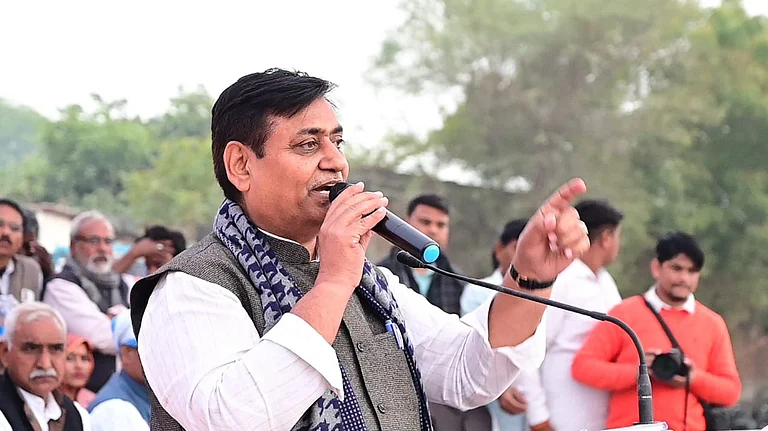The Thoothukudi violence is already part of folklore. On May 22, the Tamil Nadu Police shot at a group of protestors at this coastal town, killing 13 people. The protestors demanded the closure of the Sterlite copper plant. The violence that followed convinced the UN Rapporteur General to condemn it. This essay is an attempt to see how people construct the event.
Enter the newspaper
The newspaper reports inevitably begin the same way. They describe a key event as blandly as possible and then report the reactions of witnesses, government and victims. The response, even the anger, is formulated as a collection of cliches or caveats. Each fragment has a truth content, a poignancy and yet in all these ‘first approximations’, the whole is less than the sum of the parts. The newspaper report itself becomes a jigsaw puzzle tired of forced symmetries. It tries to raise issue of ambivalence and ambiguity employing shades of language.
The official language of casualty is the word ‘shooting’. It has a clinical touch to it. Shooting almost appears as an official act, an imperative, a necessity of a police without alternatives. Shooting has a value neutrality which, however, unravels quickly. The word killing commands a different hearing, a different audience.
The blandness of the newspaper report is subverted by pictures of police snipers without uniform. One then reads that four major activists were killed, and this sounds too random for comfort. What sounds like a sudden protest, one soon discovers, has been brewing for a hundred days. The corporation, Vedanta, which looked sanitised, suddenly appears suspect. The effort of the police and the administration look like hurried attempts to bring a sticky event under control. A hermeneutics of suspicion is inaugurated at the very beginning. Behind the blandness of official governmentality lies the lethal nature of government indecision and also indifference to the silent casualties of ecology, like poisoned water, contaminated soils. Ecological devastation is all too often presented as an act of god or the absentmindedness of man.
Truth in such a report is a battle of two embedded rituals of suspicion. First, the automatism of government reactions announcing doles, an enquiry commission as if government is an instant ATM of humanitarianism and the government attempts to label ‘outsiders’ as causes of trouble. The outsider is a very inclusive word. It embraces the NGO, the journalist, the activist—anyone showing concern for issues which need a variety of information. An outsider is by definition dirt, matter out of place, an instigator. Law and Science have an objectivity which ordinary protest, even by suffering victims, lacks. In fact, one realises that truth and objectivity get ritually separated. Objectivity is a set of sanitised rituals that groups have to construct to claim expertise and authenticity; NGOs have to work hard to challenge the finality of government diktats. A scream is not enough; it has to be couched in footnotes.
Truth also becomes a form of musical chairs as different narratives are played out. Truth can be the inadvertent casualty of the choice of time in a narrative. Does the report begin with the protest as an explosion of civil society on the streets, or does one talk of the months of disquiet and waiting, the symptoms of ill health earlier? Does truth become truth only in the structure of public space? The question then is what is the responsibility and role of writing in this context? How does one talk of justice in this environment, realising that Vedanta attracts more protests in London than in the margins called Thoothukudi?
The media itself realises that standard narratives cannot go beyond conventional traffic signals of what is permissible or acceptable narratives as a first report. Let us call a FMR (first media report) to spoof it along first information report (FIR). One tactic is to produce a bland first report citing all sides, and then angle the next day’s headlines, as The New Indian Express did. So, Day I reads that the shooting was inevitable. Day II headlines report the SP and the collector have been shunted. The word ‘shunted’ virtually hints that the direction of narrative has changed, that Day 1 was just a prelude to Day II, as the plot thickened. The second, more effective, tactic is to make narrative and visual look discordant. One INSerts a picture of an official sniper/shooter in a police car; suddenly, the suspicions of protestors look more substantial.

The most lethal of the tactics of juxtaposition is probably the nostalgia narrative used by The Times of India. The paper invited V.A. Ravi Kumar, a retired IPS officer, to talk of crowd control in his time. As he lists out the precautionary tactics, one realises the narrative is an indictment of the current firing. When Ravi Kumar says, “firing is an act of cowardice” and maintains “firing should be avoided at any cost and should be last resort”, one realises that these are not just pearls of nostalgic wisdom, but an indirect indictment of police action in Thoothukudi. The newspaper becomes an art form of multiple narratives, a set of juxtaposition which slowly lets the reader create his own flexible interpretation that not all is right with the world of Thoothukudi. The newspaper reports have to be fragmentary, so the reader can build his version of the whole.
Decoding the lie
Telling truth to power is more complex than it first seems. How do you capture the integrity of the whole, while retaining justice for one part? One has to capture the singularity of the event, while retaining a sense of the general. Around Thoothukudi, how does one capture the nature of death? Death as a demographic fact, as number, reads differently. Death as execution from a sniper’s bullet sounds inevitable, but death as atrocity may not be necessary. The obscenity might be in the official definition of it, the garb of necessity which it throws around the event and needs to be challenged. Death as murder cannot be presented as death by execution. The obscenity begins there. Making the deaths inevitable and bureaucratic gives it anonymity, a technocratic inevitability. Narrative restores life to each body. Statistics has to be redeemed though biography. ‘Ten dead’ creates an obscenity of indifference that only storytelling and writing can redeem.
Both power and the narratives of power have a sense of fait accompli. Media as a narrative of power determines the time of an event. Within a day or two, the media forces a sense of normalcy on narrative. It wants to speed up time, convey a sense of closure. One senses this after the shootings. It is not pain or memory that the media focuses on, but on whether shops are open--a signal of normalcy.
As one walks through Thoothukudi, violence is almost botanical in its diversity. How do we present the various strands of violence around the protests? People dying of mysterious ailments. The bureaucracies’ indifference. Vendanta’s callousness. The burning of buses and vehicles as a warzone. The police shooting. The violence of narratives. How does one grade them, locate them? How does one collate or collage indifference, callousness, erasure, brutality, cold-bloodedness, vandalism or even, the slow ruthlessness of environmental violence?
The Challenge of Normalcy
The question is what is normalcy when the Sterlite battle has been going on for 14 months. Is normalcy merely a right to resume operations for Sterlite, or the basic resumption of law and order, with politicians playing humanitarian and promising doles to every family whose member has been shot? The language of normalcy has a quaint quality when the two government officers are designated as ambassadors to visit hospitals and interact with the public. There is a sense that Thoothukudi has been alien or hostile territory for a week. They were even styled as ‘listeners’. Maybe, it emphasises the fact that this government needs a hearing aid when it comes to reacting with the public.
Yet, a return to normalcy is not like putting back a piece of plumbing. It is a complex rite of passage which demands an unravelling of covert and formal operations. If protest is a right of citizenship, the people of Thoothukudi are not quite citizens. Pollution is seen as normal but protest is seen as polluting the body politic. The government, in fact, is deploying police officers to show that everything followed procedure. Families of deceased are forced to sign statements. Normalcy almost seems a PRO operation, a quick fix to cover up the lack of governance. The emphasis is not on truth but on law and order. The headlines read ‘On the road to recovery’. Yet, as one ploughs through the details, the headline turns ironic. Credibility and trust are deeper than normalcy. In fact, the word ‘normalcy’ in the aftermath of disasters has become obscene and hypocritical, a set of props to convince the world that the regime is in control.
(Visvanathan was part of the People’s Watch Team investigating the violence at Thoothukudi, which was led by Henri Trphagne and Nityanand Jayaram)
























